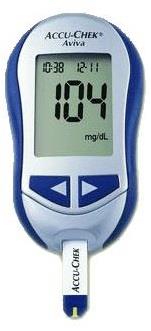Save 25% On Your First Autoship Order
Save 25% On Your First Autoship Order

Diabetes is a condition that directly affects the functioning of pancreas. The pancreas are located right behind the stomach and secrete insulin into blood. This insulin allows the body to absorb sugars and fats from the food we eat and thus helps converting it into energy. If a person is suffering from diabetes, the functioning of pancreas is permanently affected and the body produces lower amounts of insulin. The pancreas of a person with diabetes:
This ultimately leads to a restricted diet where any excessive sugar cannot be converted into energy and in turn causes complications inside the body.
A number of ailments are sometimes directly or indirectly caused by diabetes:
Unlike other ailments, the reasons for diabetes are not yet completely known but the most common causes include:
Type 1 diabetes is caused due to the destruction of beta cells in pancreas that produces insulin. This destruction is caused by body’s own immune system (an auto-immune disease). Normally the function of immune system is to destroy any potentially harmful foreign substance including bacteria and viruses. But in auto-immune disease, body’s own cells start getting attacked by the immune system. The symptoms of Type 1 diabetes usually develop in shorter period of time while beta cell destruction continues for several years. Type 1 diabetes can happen in any age but it typically develops in young adults and children.
Type 2 diabetes is most common form of diabetes which is caused by multiple factors (mentioned above). It is developed when the pancreas can no longer produce the required insulin. Old aged and middle aged people are more susceptible to suffer from type 2 diabetes. The symptoms can be subtle and people may remain undiagnosed for years.
Use a Glucose monitor to keep the track of blood sugar. Roche offers one of the best glucose monitors. For instance, Roche Accu-Chek Aviva Blood Glucose Meter is designed to quantitatively measure the concentration of blood glucose (sugar) using test strips. This monitor features automatic checks to detect and prevent unreliable results. It provides quick results just in five seconds and requires a small 0.6 microliter sample size.
 |
| Roche Accu-Chek Aviva Blood Glucose Meter |
Roche Accutrend Plus Meter is a flexible, hand-held point of care device for the main risk factors of cardiovascular diseases (CVD). This device provides convenient and rapid detection of cholesterol and glucose. It is tailored to be used outside the lab in the physician’s office and in the hospital as well as for self-measurement at home or during sports. Results are provided directly from capillary blood.
 |
 |
 |
| Roche Accutrend Plus Meter Kit | ||
Disclaimer: All content found on our website, including images, videos, infographics and text were created solely for informational purposes. Our content should never be used for the purpose of diagnosis or treatment of any medical conditions. Content shared on our websites is not meant to be used as a substitute for advice from a certified medical professional. Reliance on the information provided on our website as a basis for patient treatment is solely at your own risk. We urge all our customers to always consult a physician or a certified medical professional before trying or using a new medical product.

Taikhum Sadiq has been a Health Products For You contributor since 2016.
He is an archaeology student and is passionate about learning about the past and how it impacts our future. He believes ...
How To Increase Iron Levels Quickly
It’s a question that must have puzzled you like many others. Iron is essential in hemoglobin production and its inadequate levels can negatively impact your health. Dive into this informative article to explore top iron-rich foods that can help you fight iron deficiency.
10 Best Coccyx Cushions for Tailbone Pain
If you're like most people, you spend about 8 to 10 hours sitting every day. However unhealthy, it is part of life for many, and can cause tailbone pain. Coccyx cushions can help alleviate this pain. Click to read more and find the perfect coccyx cushion for your tailbone pain.
5+ Best Adult Diapers for Fecal Incontinence
Dealing with fecal incontinence can be challenging, but you're not alone. Read this article and navigate through discreet and effective solutions that help you manage fecal incontinence and let you live life on your terms with confidence and comfort.
Top 5 Best Reviewed Nebulizers of 2024
Need an effective and affordable nebulizer? Look no further, in this article we offer 5 of our best reviewed nebulizers that are loved by our customers. Click to read more and find the perfect nebulizer for all your respiratory needs.
10 Best Penis Pumps For Erectile Dysfunction
For anyone dealing with erectile dysfunction, penis pumps serve as a great way to manage it. But with so many products available, determining the best one for your needs can be challenging. To assist you in refining your choices and making an informed decision, here are our top 10 options, recognized for their effectiveness and safety.